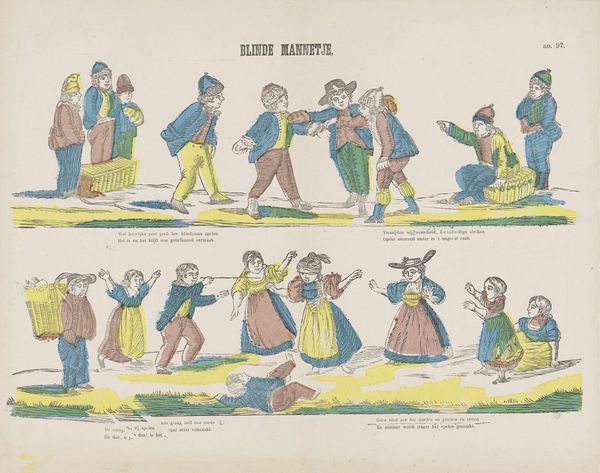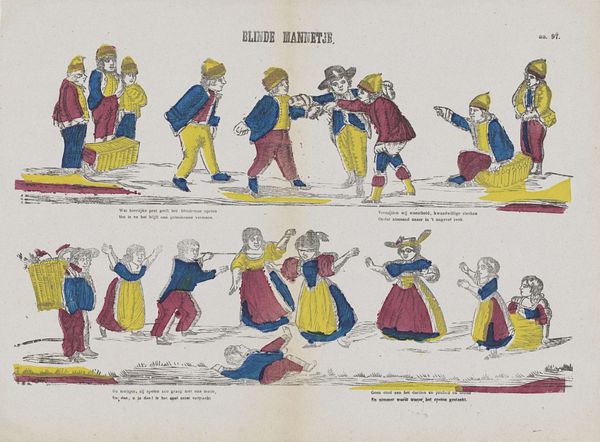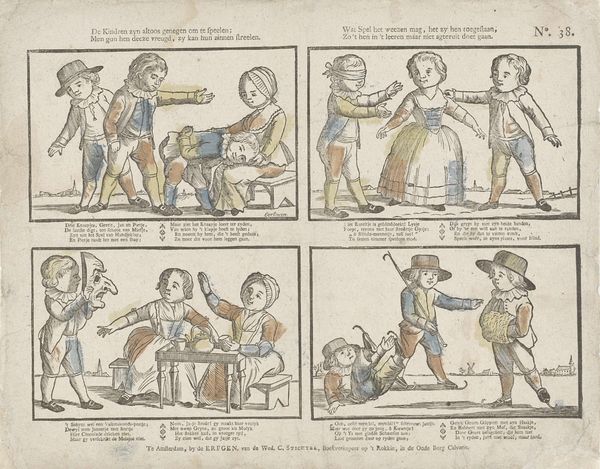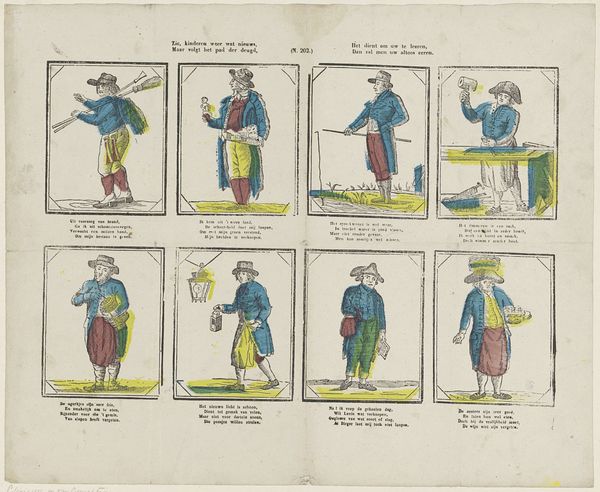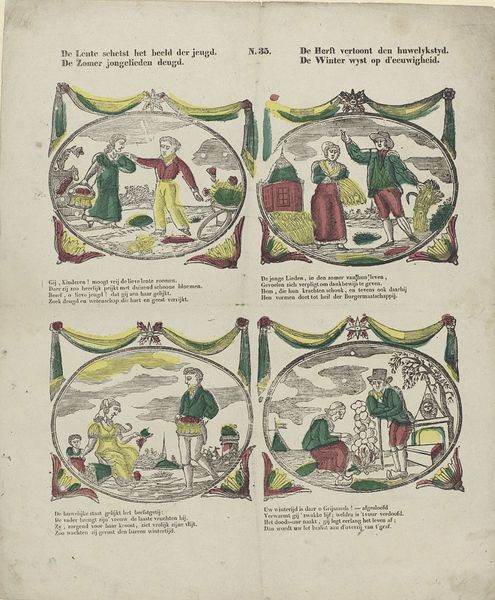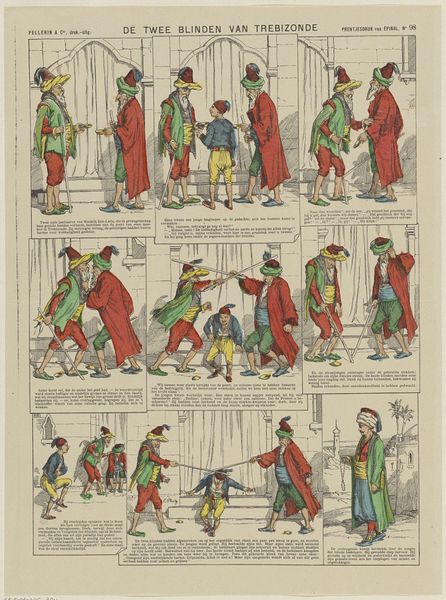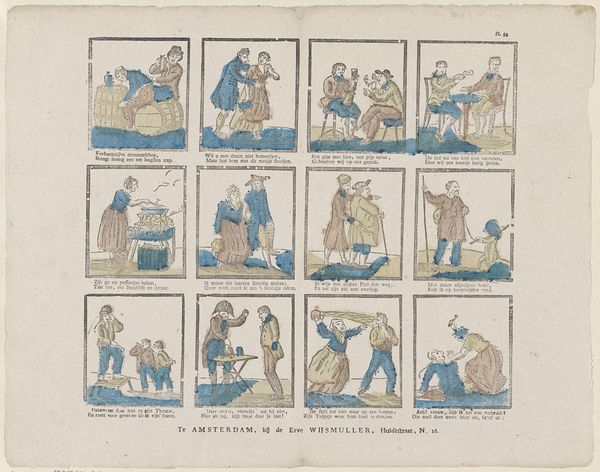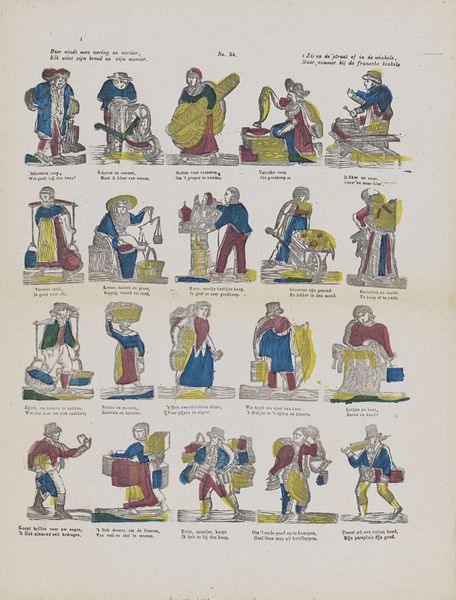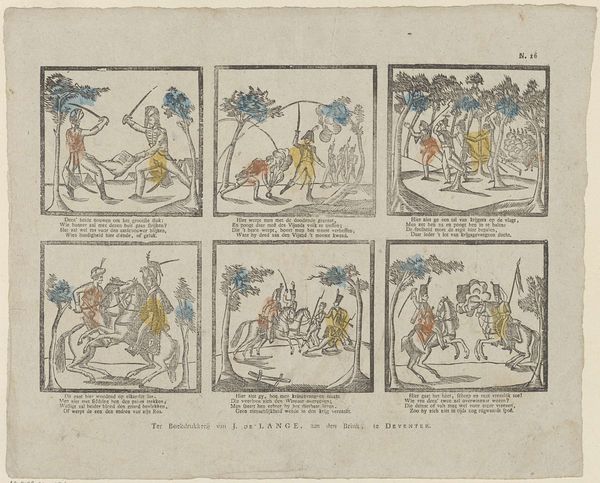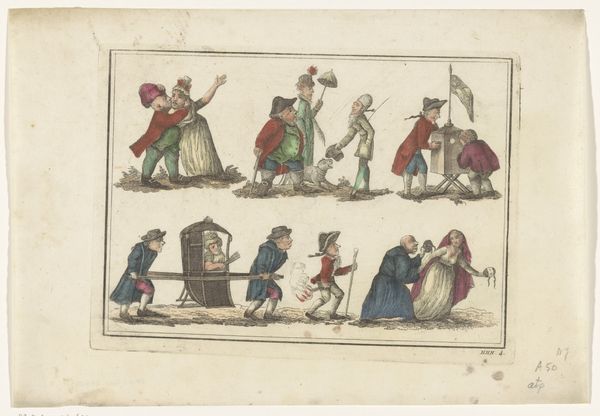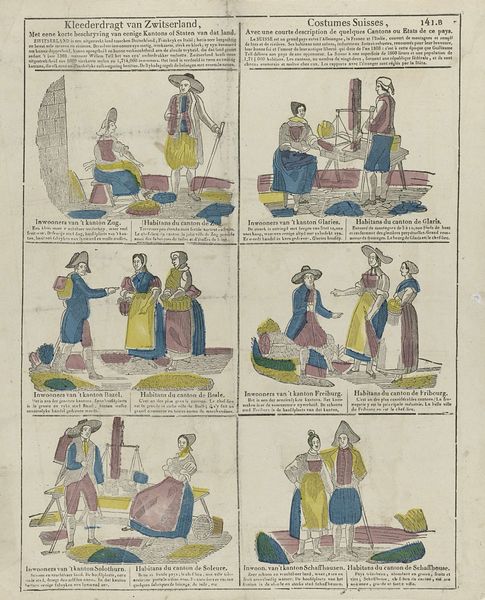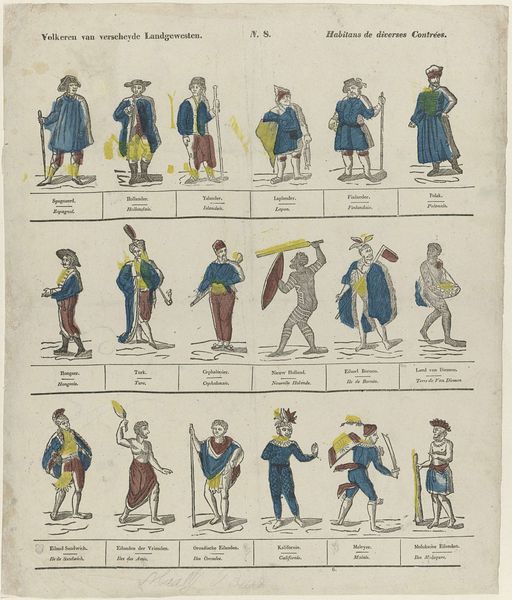
Lieve kind'ren kan 't u strelen, dat gy speelgenoten ziet, / gy moogt in hun blydschap deelen, maar in hunne twisten niet c. 18th - 19th century
0:00
0:00
print, engraving
#
narrative-art
# print
#
folk-art
#
genre-painting
#
engraving
Dimensions: height 331 mm, width 415 mm
Copyright: Rijks Museum: Open Domain
Curator: This print, "Lieve kind'ren kan 't u strelen…" by Weduwe H.J. Mellink, likely from the 18th or 19th century, offers a glimpse into the materiality of childhood and social dynamics. Editor: Indeed. Looking at the composition, the print feels almost like a snapshot of different children's games. What strikes you about this work? Curator: I'm interested in the print itself. The process of engraving, a reproductive technique, meant images like this could reach a broader audience, and also the social dynamics of production, consumption and accessibility. The text at the bottom notes that this print was produced "by the widow H. J. Mellink." Consider what this might have meant for the labor involved, particularly for women at the time. Was this perhaps a means of economic self-sufficiency? What was their life like, and how did the social standing of the woman herself impact both production and reception? Editor: That's a great point. The act of printing becomes a part of the story. What can the image tell us? The children, their clothing, their pastimes. The use of simple games is telling. Curator: Exactly. Consider how these visual representations, mass-produced and distributed, might have shaped perceptions of childhood itself, the role of labor in making something, how it reached specific markets, how notions of play intersect with gender, class and social behavior. Who had access to these kinds of prints, and why? What materials went into them? What kind of social and material value might that possess? Editor: I never thought of it like that before, but now I am more curious about this engraving and how its materials intersect. Curator: Looking beyond simply "what it is," or the representation, really helps unlock art. It makes you rethink about social class, materiality, consumption, production and all aspects of how those intersect in society.
Comments
No comments
Be the first to comment and join the conversation on the ultimate creative platform.
